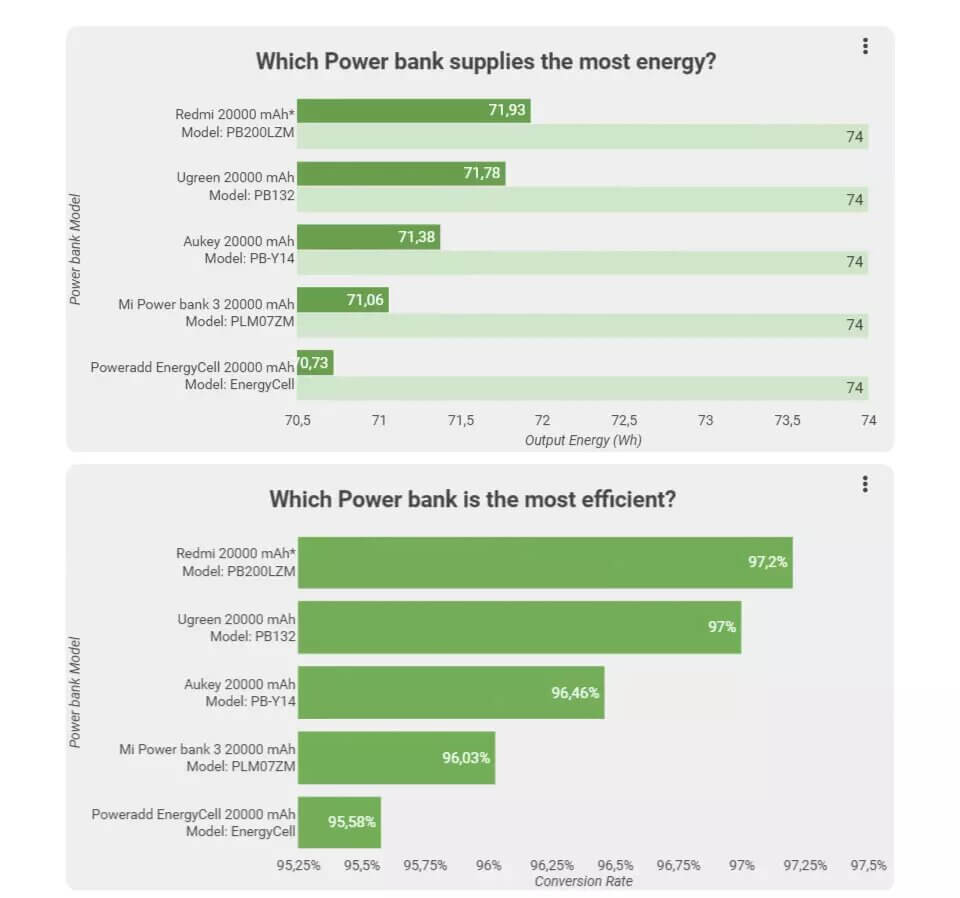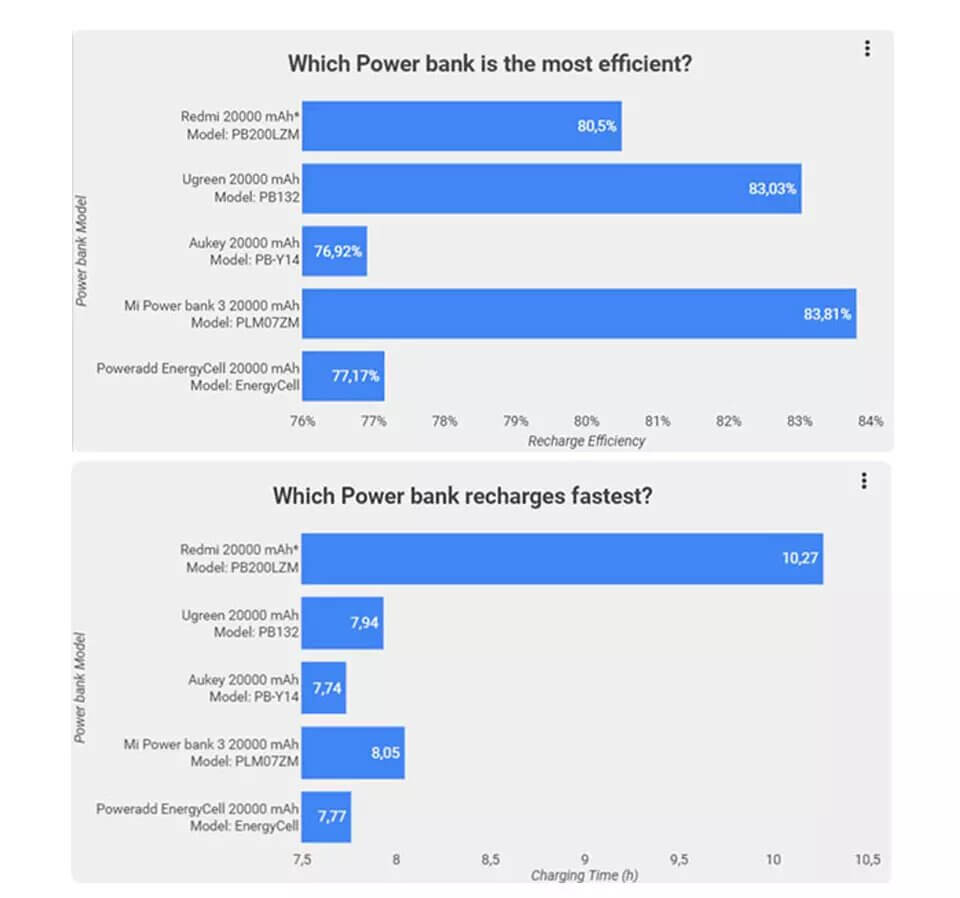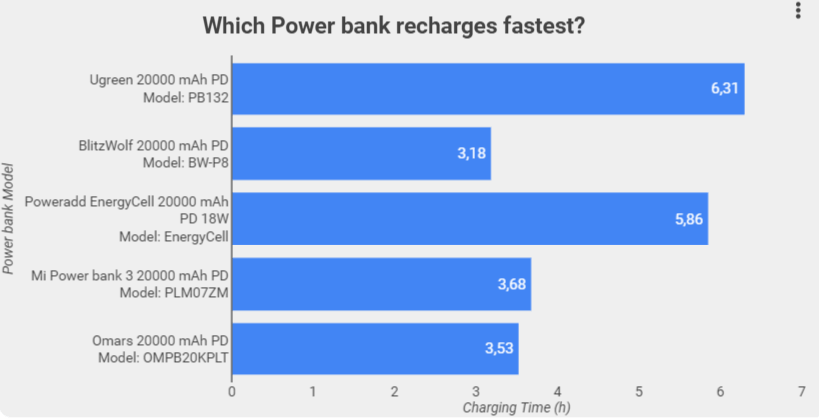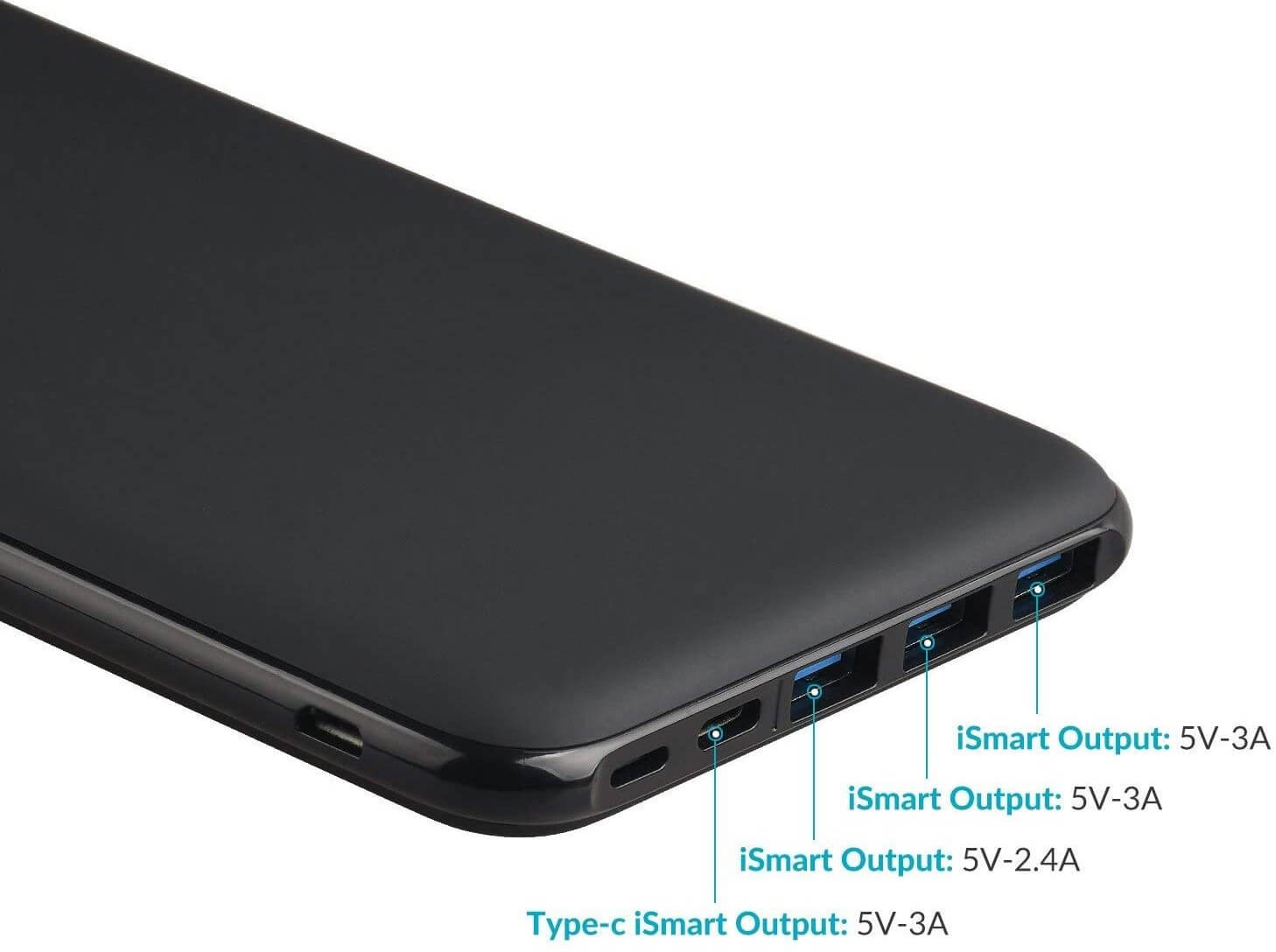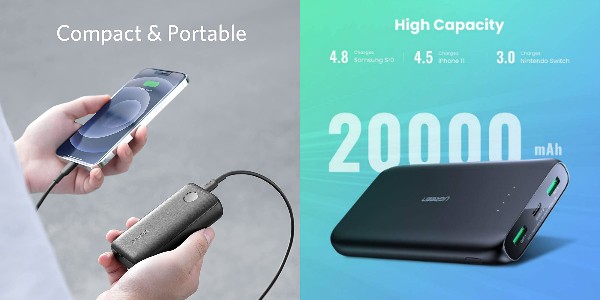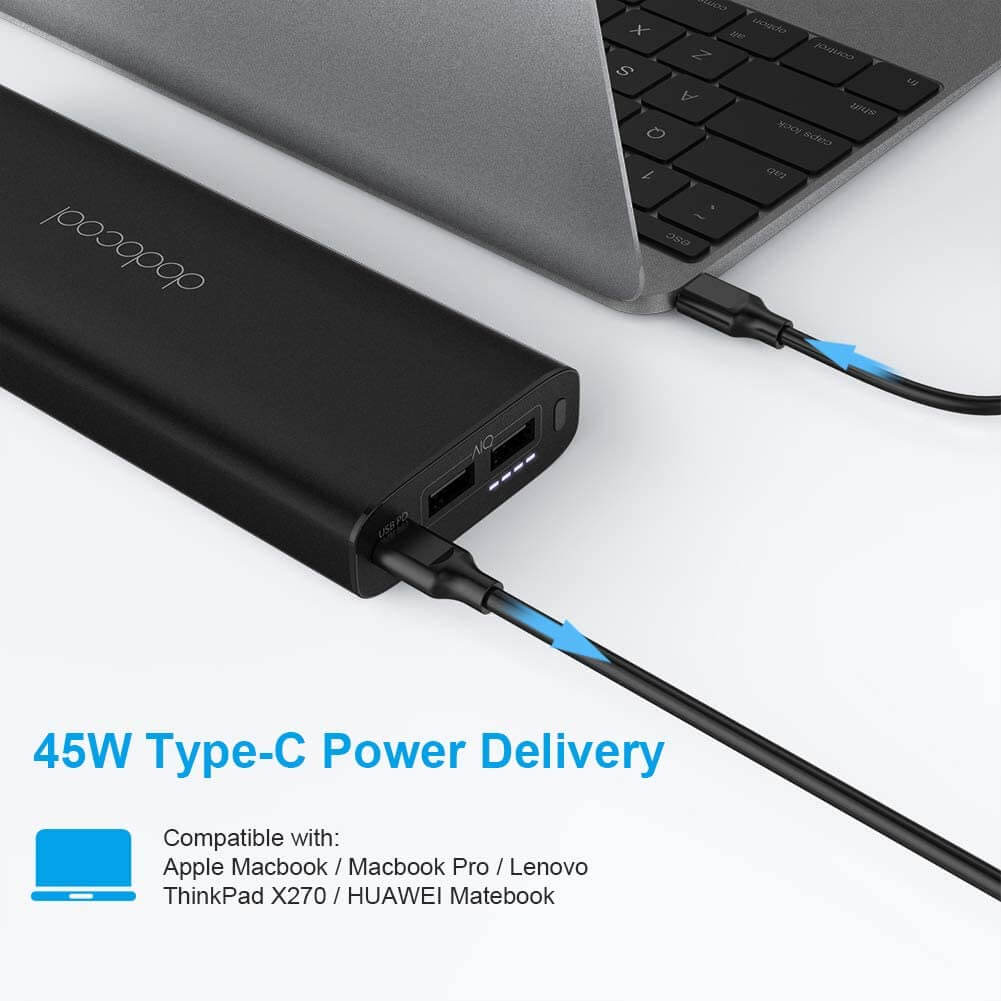Portable chargers or power banks have become the ideal accessory for recharging our devices wherever and whenever we want: travel, trips to the countryside, subway, beach…
However, as with cell phones or laptops, there is a wide variety of brands and models of power banks on the market and this can be a problem for the buyer:
Which models are the best quality? Which power bank do I need for my cell phone?
To try to answer these questions, we found the PowerBank20 website, an independent project that is responsible for testing hundreds of power banks available on Amazon in order to provide its readers with an analysis focused on more objective criteria: energy efficiency, power, charging time…
In this way, we can find on its home page a ranking with the 20 best power banks of the month, including both models already tested and that have passed their recommendation criteria, as well as those that are in the process of being analyzed but that, due to their characteristics, are considered interesting to recommend to their readers (if after analyzing them they do not meet the expectations, they are removed from the ranking).
As a curious fact, the results of the PowerBank20 analysis are freely available and can be found published on its website, allowing the most technical or curious users to know in depth the results of each power bank analyzed.
What to analyze in a power bank?
For each power bank purchased on Amazon, the PowerBank20 team subjects it to 2 main tests:
Recharge/discharge energy efficiency test
In this test, the power bank is completely discharged using an electronic charge at a certain power, depending on the type of discharge (or device charging) allowed by the model: standard (10W), Quick Charge 3.0 (14W) or Power Delivery (14W, 24W or 40W).
Once the power bank is discharged, they check the energy it has been able to supply and thus its energy efficiency: energy supplied / energy stored.
For example, power banks of 20000 mAh (or 20 Ah) capacity have an internal battery that stores an energy of 74 watt-hours (Wh), the result of multiplying the capacity and the nominal voltage of the battery, usually 3.7 volts:
Stored energy = 20 Ah x 3,7V = 74 Wh
In the following image we can see several 20000 mAh models analyzed by PowerBank20 showing the energy supplied and their energy efficiency for a standard discharge (without QC 3.0 and/or PD technology):
A power bank is considered good if it has a discharge energy efficiency equal to or greater than 85%.
Likewise, they also measure the time and energy efficiency in recharging, i.e. the amount of energy that must be supplied to the power bank to fully recharge:
It is interesting to see how there are 20000 mAh power banks with Power Delivery fast charging technology in their input port that are capable of recharging in less than 6 hours (approximately) compared to other models without fast charging where their charging time would involve between 10 and 20 hours.
Power test
A power bank will charge devices faster if it is able to supply the power demanded for each device.
If the output USB port of a power bank indicates 5V / 3A it means that the maximum power it can supply would be 15W (5V x 3A).
In this test the PowerBank20 team checks the maximum individual power that can be supplied by each of the USB output ports of a power bank and the maximum total power of all its ports at the same time.
I want to buy a power bank: where do I start looking?
PowerBank20 recommends us to first ask ourselves what kind of devices are you going to charge with a power bank and how often will you use it?
We should never forget that electronic devices, in this case power banks, should be adjusted to our usage needs, rather than us to them.
For example, if you need a power bank for daily use in your cell phone because its battery runs out or arrives “very just” at the end of the day, then a model with 10000 mAh capacity would be more than enough, in addition, because of its weight and dimensions it is much more comfortable to carry in a pants pocket, bag or backpack without taking up much space.
On the other hand, if you want a power bank to eventually take with you on trips and you need it to have enough energy to charge your cell phone several times or also charge other gadgets (tablet, headphones, camera, ebook, friend’s phone…), consider that a 20000 mAh power bank with 2 or 3 USB ports is ideal for its size and weight.
Once you are clear about the main use of the power bank, you should think about the technology it incorporates and your budget.
In general, it is recommended that the power bank incorporates the new USB Type-C port (reversible) and Quick Charge (QC) and/or Power Delivery (PD) fast charging technology in both the input port (recharging the power bank) and the output port (charging devices).
In addition, in high capacity models (20000mAh or higher) it is almost imperative that the input port has Quick Charge* to avoid long waiting hours during full recharge.
*Of course, it will also be necessary to use a charger compatible with fast charging power bank (QC 3.0 and/or PD) if you want to take advantage of this technology.
Obviously, buying the latest fad always comes at a higher price and, at this point, you should think about whether it is worth having a power bank of the latest generation (along with the right charger) if your mobile does not have fast charging or USB C port and you do not intend to renew it.
I have a laptop: can I use a power bank?
Recently in PowerBank20 they published this guide where they exhaustively explain the options that exist to charge any laptop and the types of power banks that can be used according to their charging port and the power they can supply.
Thanks to the tests done in this guide we could confirm that it is a totally valid and recommended product, as long as you know how to choose the right model taking into account the charging voltage of your laptop, the power that can supply the power bank and the regular tasks you do, for example, it is not the same playing video games (consumes more energy) than surfing the Internet.
In addition, a laptop power bank can be a very useful option for those people who cannot replace the dead battery of their laptop and always have to use it plugged into the mains.
In short: which power bank to buy in 2022?
Taking into account the behavior of the market today, the smartest thing to do, rather than being stuck in a single brand, is to know what features can make a particular power bank more or less interesting depending on the needs of each person, so we would pay attention to:
- Capacity of 10000 mAh or 20000 mAh.
- Presence of USB-C port
- Input/output ports with fast charging PD and/or QC 3.0 (at least one)
- Extras: solar panel, compass, wireless charging point, flashlight….
In addition to Xiaomi, if you want to know brands that stand out in the sector, we recommend you take a look at power banks from Anker, Baseus, Charmast, RAVPower or Zendure.

